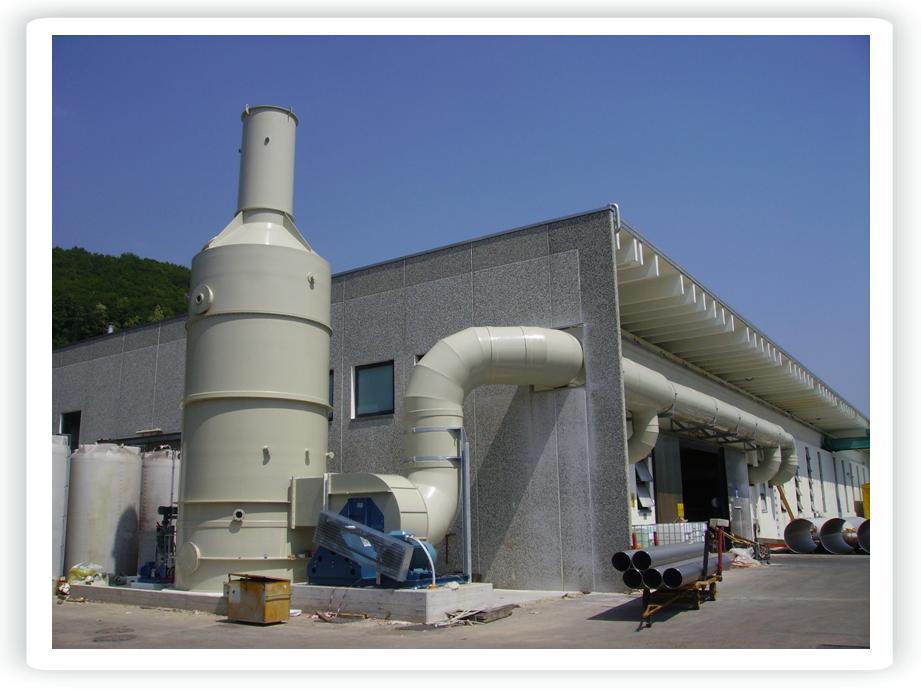Biofilters and bioscrubbers have different applications, such as VOC treatment, inorganic compounds treatment or odor reduction.
Biofiltration is a biological process used for the treatment of volatile organic and inorganic compounds. Biofiltration application uses microorganisms that subject contaminants contained in air to biological degradation.
During an air treatment process by biofiltration, polluted air passes through the macropores of the filter material. At this time the contaminants degrade in order to be subsequently transferred to a liquid medium where they are used as carbon and energy sources (organic compounds) or as a source of energy (inorganic compounds).
Use of biofiltration implies the production of biomass and the partial or total oxidation of the contaminant. In turn, biomass, under certain conditions, undergoes oxidation by endogenous respiration. Thus, biofiltration processes result in a complete decomposition of the contaminants, creating non-hazardous products.
There are three types of biofilters:
Fixed Bed Biofilters consist of a filter material that may be synthetic or organic, which serves as support for the microorganisms. Some of the filter materials that may be used are porous rock, diatomaceous earth, perlite, and ground wood chips as well as different types of compost or organic waste. Fixed bed biofilters operate by passing a humidified gas stream containing the contaminants through the bed where they are degraded by the microorganisms. This is recommended for treating contaminants poorly soluble in water due to the absence of the aqueous phase. It is important to note that the physical footprint of fixed bed biofilters is greater than other types of biofilters.
Drained Bed Biofilters consist of a packed column with an inert support where biofilm develops. Through the bed, a gaseous stream is fed that contains the substrate to biodegrade in addition to a liquid stream that is continually recycled through the bed. This liquid stream has the function of providing nutrients to the biofilm, as well as removing the degradation products of the microorganisms. These systems are recommended for water-soluble compounds. The recirculation of fluid facilitates the elimination of the reaction products as well as better control over the biological process by pH control and composition of the liquid medium. Drained bed biofilters are the equipment with the smallest physical footprint in addition to being simple to operate.
With bioscrubbers, the compound to be degraded first is absorbed in the liquid phase located in an absorption tower filled with liquid. The operation involves making the gas flow in a countercurrent through the liquid where the contaminants and oxygen are absorbed. Subsequently, the liquid is fed to a reactor packed with an inert material covered with biofilm that is responsible for degrading the pollutant. Bioscrubbers are the most suitable systems for the treatment of highly water-soluble compounds.
Their advantage in respect to biofilters is that they do not accumulate products that can have harmful effects on the microorganisms. In addition, they facilitate control of the biological process through the composition of the liquid medium.
However, bioscrubbers are more costly because they require two systems, one for absorption and one for the biodegradation of the contaminant, therefore making them less economical than drained bed biofilters.
The selection of the most appropriate system depends on the characteristics of the gas stream being treated, the expected removal efficiency and the costs involved.
The main parameters to consider when designing a biofiltration system are:
- The characteristics the gas contaminate (concentration, flow, particulate matter, temperature)
- Selection of filter material
- Moisture content of the filter material
- Microorganisms

